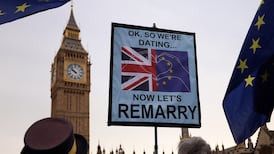Interest rates internationally are starting to edge downwards, but all the signs are that the move will be gradual. In what was described as a " knife-edge” decision the Bank of England made the first cut in four years last week. Meanwhile, the US Federal Reserve Board - the Fed - left its key interest rates unchanged, but gave a clear hint that a reduction is probably on the cards for September. The slow march downwards from the increases introduced to bring down the surge in inflation is getting underway.
The European Central Bank (ECB) has already nudged interest rates downwards by a quarter point and there is speculation that it may repeat this in September. Euro zone figures published last week showed a small increase in annual inflation in July - to 2.6 per cent from 2.5 per cent the previous month - which has raised some nervousness about the outlook. However, the ECB still has room to trim interest rates again in September while still leaving them in restrictive territory.
The dilemma for central banks is that while inflation is slow to fall to target levels, economic growth is lacklustre in Europe and there are risks to the outlook in the US too. The Fed is obliged to take this into account in its decisions and US job figures last Friday reignited fears of a recession. If these concerns build, the Fed will come under pressure to cut more quickly. There are also uncertainties about growth in Europe.
For Ireland, overall economic growth remains solid and does not require a stimulus, though of course mortgage holders - particularly those on tracker loans - would welcome a further decrease in borrowing costs. The outlook for slower interest rate falls carries better news for savers and also for the banks, where profit forecasts for the year have increased as a result, as reflected in interim results published this week.
READ MORE
Central banks are correct to start cautiously reducing interest rates. Inflation has not fallen as far or as quickly as they hoped, but there has still been a significant decline in price pressures. The downward march in interest rates is set to continue, but the pace will be uncertain and uneven.











